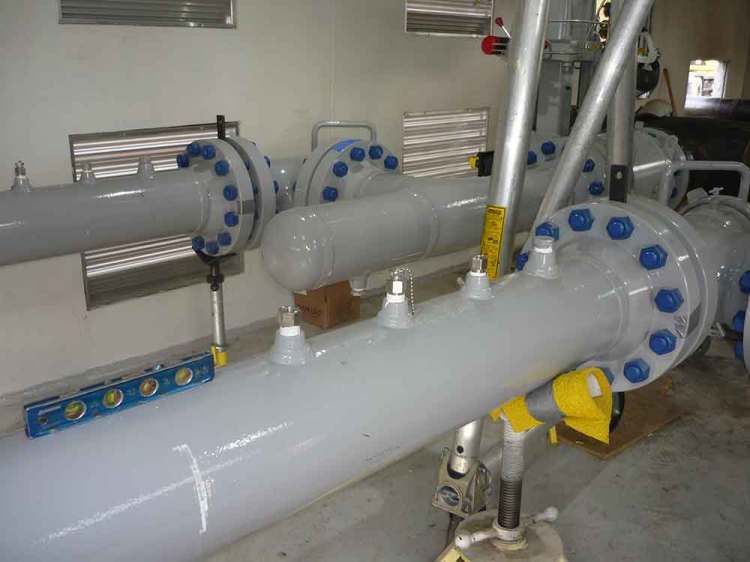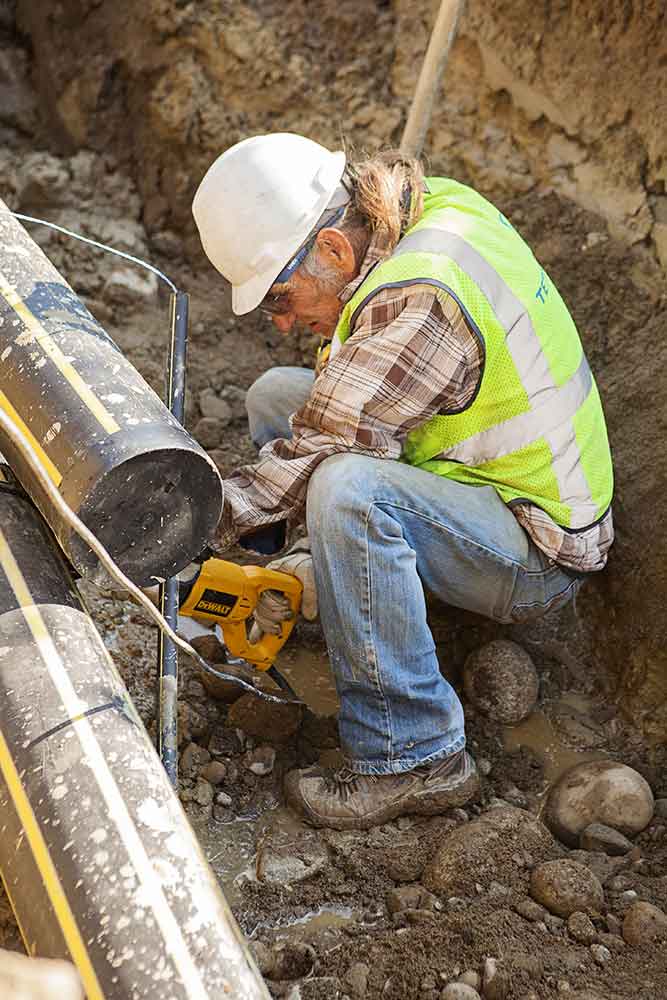- Safer materials
In the early 1960s, natural gas companies started using polyethylene (PE) pipe, commonly known as “plastic pipe.” The benefit of plastic over steel is that the plastic does not corrode and is far less likely to leak. Steel pipe is subject to corrosion and pipe wall loss leading to pitting and leaks. From an installation perspective, plastic is easier and more efficient to work with and less expensive to install. This leads to fewer construction vehicles on the road for long periods of time, better traffic flow and less air pollution.
The biggest change in materials used in natural gas distribution over the past 50 years has been the availability of higher quality plastics and higher grades of steel. These technical improvements allow natural gas companies to use smaller pipe, decreasing installation costs while increasing capacity, and leading to increased availability of clean burning, domestically produced natural gas. These improved materials, along with more advanced coatings, provide much stronger, safer natural gas distribution systems designed to provide reliable service for the next 100 years or more.
- The evolution of directional drilling
Some residents and business owners might think that because natural gas is going to be installed roads and sidewalks will need to be dug up. This isn’t always the case. Since directional drilling started in the early 90s, it has helped reduce the digging and disruption of terrain, especially at railroads and river crossings. Directional drilling is less invasive to the current terrain and is efficient for installation of natural gas lines. This method is also much more economical than trenching in areas with hard surfaces such as roads and parking lots. Due to new equipment and technology, directional drilling is faster and safer and takes about half the time of traditional trenching methods.
To see a video of how a piece of equipment called “a mole” helps install natural gas in residential areas, click here.
- Longer life span for transmission pipelines
The life span for a transmission line (the backbone of natural gas infrastructure) is critical to the safety and durability of a pipeline. While a life span can depend upon a number of variables, the steel pipe installed in the 1950s had inferior coating and poor cathodic protection and would need to be replaced about every 50 years. Steel transmission lines installed today feature coatings and a solid cathodic protection system that could last indefinitely. Accelerated aging testing by DuPont and Dow Chemical, the manufacturers of the polyethylene resin used in PE pipe, has indicated a minimum useful life of 100 years. Doubling the life expectancy of a pipeline increases the safety for businesses and residents because it doesn’t have to be replaced nearly as often.
- Education about natural gas
Did you know that more than half the homes in the U.S. are heated by natural gas and that number is growing every day? As more people learn about the benefits of natural gas, they are also understanding more about where natural gas lines might be located. For this reason, organizations such as Dig Safe are helping to educate residents about the importance of calling before you dig. As natural gas infrastructure grows, all contractors and residents are required by law to call before digging or excavating. This process ensures pipelines or any other utility lines are not impacted by construction. This is extremely important because third-party damage is one of the most common reasons for a gas leak.
- Impact of new technology
Since the advent of cell phones and computers, natural gas companies have quicker access to information. New technology, including X-ray equipment, helps locate current natural gas pipeline or other utility lines.
At Summit Natural Gas of Maine, as we install hundreds of miles of pipeline across Maine we’re using the latest technology and installing brand new equipment like for our pipeline in southern and central Maine.
Summit Natural Gas of Maine is proud to bring natural gas service to communities in southern and central Maine. To learn about our service areas, more information about natural gas or tips on how you can help reduce your carbon footprint, visit www.summitnaturalgasmaine.com or “like” us on Facebook.
Send questions/comments to the editors.





Success. Please wait for the page to reload. If the page does not reload within 5 seconds, please refresh the page.
Enter your email and password to access comments.
Hi, to comment on stories you must . This profile is in addition to your subscription and website login.
Already have a commenting profile? .
Invalid username/password.
Please check your email to confirm and complete your registration.
Only subscribers are eligible to post comments. Please subscribe or login first for digital access. Here’s why.
Use the form below to reset your password. When you've submitted your account email, we will send an email with a reset code.